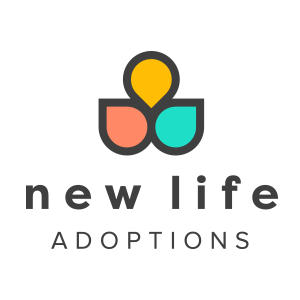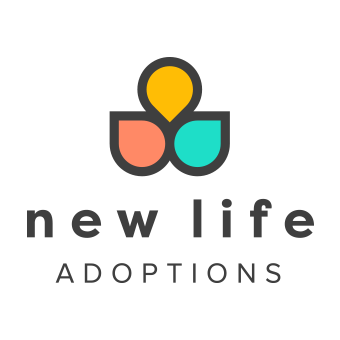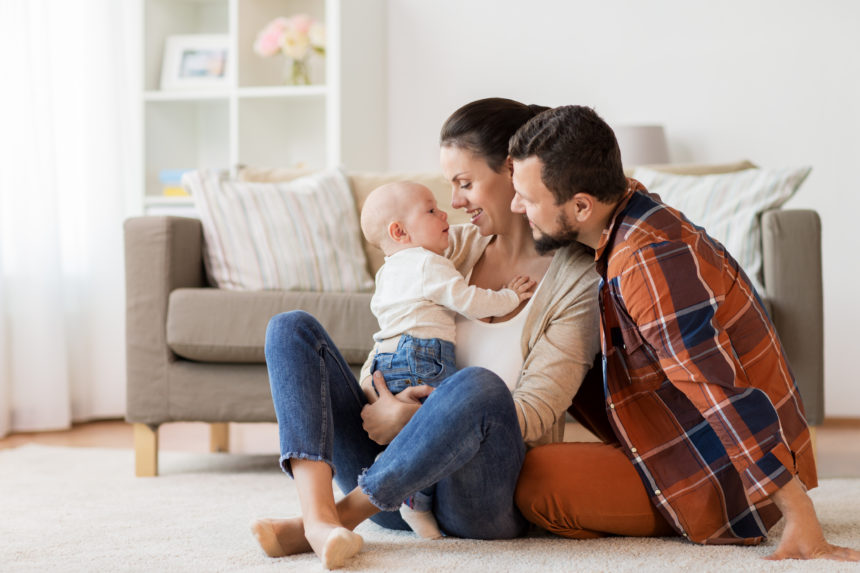Recently, we shared a post about when you should you tell your child that they were adopted. The simple answer is—often and as early as possible. So, the next logical question is—how do you tell them?
Conversationally
If you adopt your child as an infant, talk to them about their birth parents and their adoption story naturally and organically starting as soon as you come home from the hospital. Since most of the New Life Adoptions’ situations are fos/adopt placements, you are acting as the foster parents until the birth parent(s) have released their parental rights. (They do this by signing the Voluntary Consent paperwork, and then ten business days have to pass. Also, the Fathers Adoption Registry will be checked). As you are going about your day you can say to the little one, “I am so glad that Katy chose us to take care of you.” Once the placement is secure you can say, “I am so glad that you are in our family and always will be!”
If you adopt your child as an infant, talk to them about their birth parents and their adoption story naturally and organically starting as soon as you come home from the hospital.
When children are around three years old, they developmentally become curious about where babies come from. They will see pregnant women in stores, in your church, and maybe in your extended family. This will give you the opportunity to answer their questions organically. Conversation starters such as, “I grew in Grandma Donna‘s tummy, and you grew in Katy’s tummy,” can be a simple and honest way of sharing about their situation. Holly van Gulden and Lisa Bartels-Rabb wrote in their book, Real Parents, Real Children, “In telling your child’s story, be accurate about the basic events, mentioning but not overemphasizing feelings. [. . .] For example, you can talk with your child about being born and how the woman whose tummy she grew in wasn’t able to take care of her and how you came to adopt her” (2000, p. 150).
Dropping “Pebbles”
You can also bring up the topic of adoption as your child grows older by “dropping pebbles.” “Pebbles” are simple starters to open a conversation. For example, “I wonder if your love of sports came from your Birth Father Dan.” From there, if you have contact with Dan, you could help your child by calling or texting with Dan to ask. If there is only a spirit of openness, but no contact, you may need to utilize the things you already know about Dan instead. Either way, you are helping to develop a level of openness in adoption.
Children’s Books on Adoption
There are a growing number of children’s books about adoption. Some will have similar details to your child’s adoption story and some may be different. Again, you can begin reading these books from the first day of placement and throughout their childhood noting the similarities and differences. In their book, The Open-Hearted Way to Open Adoption: Helping Your Child Grow Up Whole, Lori Holden and Crystal Hass share, “One great complement to any adoption story is Jamie Lee Curtis’ Tell Me Again about the Night I Was Born. This book has so much, visually, for a child to notice and laugh about, and laughing is very effective when conversing about these tough topics” (2013, p. 119).
Again, you can begin reading these books from the first day of placement and throughout their childhood noting the similarities and differences.
A Lifebook
Making a photo book with your child’s story from as early on in the process that you have it documented—maybe a picture of the birth mom holding your baby in the hospital—is a special and personal way for your child to gain an understanding of their story. A book where pictures can be added or Shutterfly-type books that show each stage of their life can be a great way for you to talk about your child’s adoption story regularly throughout their childhood.
Displaying Photos
Framed pictures of the birth parent(s) displayed in the child’s room is another way to honor the special relationship they have with their birth family along with normalizing their relationship to your child. The author of Raising Adopted Children, Lois Melina, shares three important aspects of communicating the child’s story: “A child should be reassured that her birth parents placed her for adoption because they weren’t able to act as parents of any baby, not because there was anything wrong with her […] It is important that a child know that there are thousands of children who are adopted or who do not live with both biological parents. […]The child should understand that even though she has birth parents, her adoptive parents are responsible for raising her and that this is a permanent arrangement” (1998, p. 94-95).
Framed pictures of the birth parent(s) displayed in the child’s room is another way to honor the special relationship they have with their birth family along with normalizing their relationship.
Sharing about your child’s adoption can be done through conversations, dropping pebbles, reading children’s books on adoption, creating a life book, and displaying photos of birth family members. As always, if you have further questions, you can always reach out to the New Life Adoptions Post Adoption department.
Sources:
Holden, L., & Hass, C. (2013). The Open-Hearted Way to Open Adoption: Helping Your Child Grow Up Whole. Rowman & Littlefield Publishers, Inc.
Melina, L. R. (1998). Raising Adopted Children. HarperCollins Publishers Inc.
van Gulden, H., & Bartels-Rabb, L. M. (2000). Real Parents, Real Children: Parenting the Adopted Child. The Crossroad Publishing Company.




